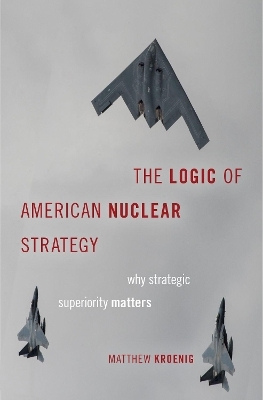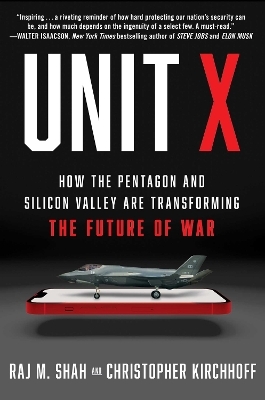
The Logic of American Nuclear Strategy
Oxford University Press Inc (Verlag)
978-0-19-084918-4 (ISBN)
For decades, the reigning scholarly wisdom about nuclear weapons policy has been that the United States only needs the ability to absorb an enemy nuclear attack and still be able to respond with a devastating counterattack. So long as the US, or any other nation, retains such an assured retaliation capability, no sane leader would intentionally launch a nuclear attack against it, and nuclear deterrence will hold. According to this theory, possessing more weapons than necessary for a second-strike capability is illogical.
This argument is reasonable, but, when compared to the empirical record, it raises an important puzzle. Empirically, we see that the United States has always maintained a nuclear posture that is much more robust than a mere second-strike capability. In The Logic of American Nuclear Strategy, Matthew Kroenig challenges the conventional wisdom and explains why a robust nuclear posture, above and beyond a mere second-strike capability, contributes to a state's national security goals. In fact, when a state has a robust nuclear weapons force, such a capability reduces its expected costs in a war, provides it with bargaining leverage, and ultimately enhances nuclear deterrence. This book provides the first coherent theoretical explanation for why military nuclear advantages translate into geopolitical advantages. In so doing, it resolves one of the most-intractable puzzles in international security studies.
Buoyed by an innovative thesis and a vast array of historical and quantitative evidence, The Logic of American Nuclear Strategy will force scholars to reconsider their basic assumptions about the logic of nuclear deterrence.
Matthew Kroenig is an Associate Professor in the Department of Government and the Edmund A. Walsh School of Foreign Service at Georgetown University and a Senior Fellow in the Brent Scowcroft Center on International Security at The Atlantic Council. He is the author or editor of six books, including Exporting the Bomb: Technology Transfer and the Spread of Nuclear Weapons.
Preface
New Foreword for the Paperback Edition
Abbreviations and Acronyms
Introduction
PART I. The Advantages of Nuclear Advantages
Chapter 1. Toward a New Theory of Nuclear Deterrence: The Superiority-Brinkmanship Synthesis Theory
Chapter 2. Nuclear War Outcomes
Chapter 3. The Correlates of Nuclear Crisis Outcomes
Chapter 4. The Mechanisms of Nuclear Crisis Outcomes
Chapter 5. Nuclear Deterrence and Compellence
PART II. The Disadvantages of Nuclear Advantages?
Chapter 6. Strategic Stability
Chapter 7. Arms Races
Chapter 8. Nuclear Nonproliferation
Chapter 9. The Defense Budget
Conclusion
Notes
Bibliography
Index
| Erscheinungsdatum | 15.02.2018 |
|---|---|
| Reihe/Serie | Bridging the Gap |
| Zusatzinfo | 4 illustrations |
| Verlagsort | New York |
| Sprache | englisch |
| Maße | 236 x 157 mm |
| Gewicht | 522 g |
| Themenwelt | Natur / Technik ► Fahrzeuge / Flugzeuge / Schiffe ► Militärfahrzeuge / -flugzeuge / -schiffe |
| Sozialwissenschaften ► Politik / Verwaltung ► Europäische / Internationale Politik | |
| Sozialwissenschaften ► Politik / Verwaltung ► Politische Theorie | |
| Sozialwissenschaften ► Politik / Verwaltung ► Staat / Verwaltung | |
| Wirtschaft | |
| ISBN-10 | 0-19-084918-5 / 0190849185 |
| ISBN-13 | 978-0-19-084918-4 / 9780190849184 |
| Zustand | Neuware |
| Informationen gemäß Produktsicherheitsverordnung (GPSR) | |
| Haben Sie eine Frage zum Produkt? |
aus dem Bereich


